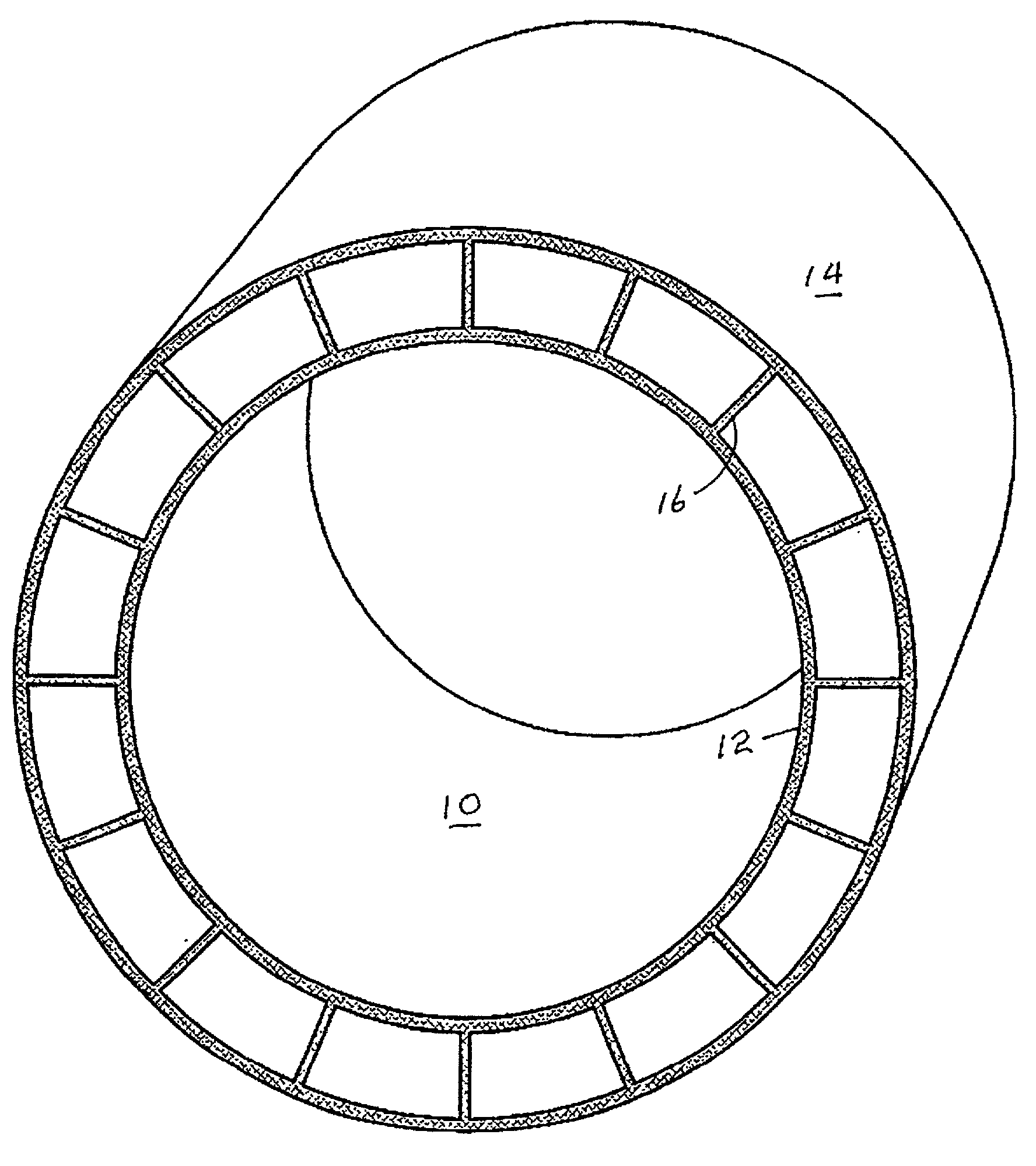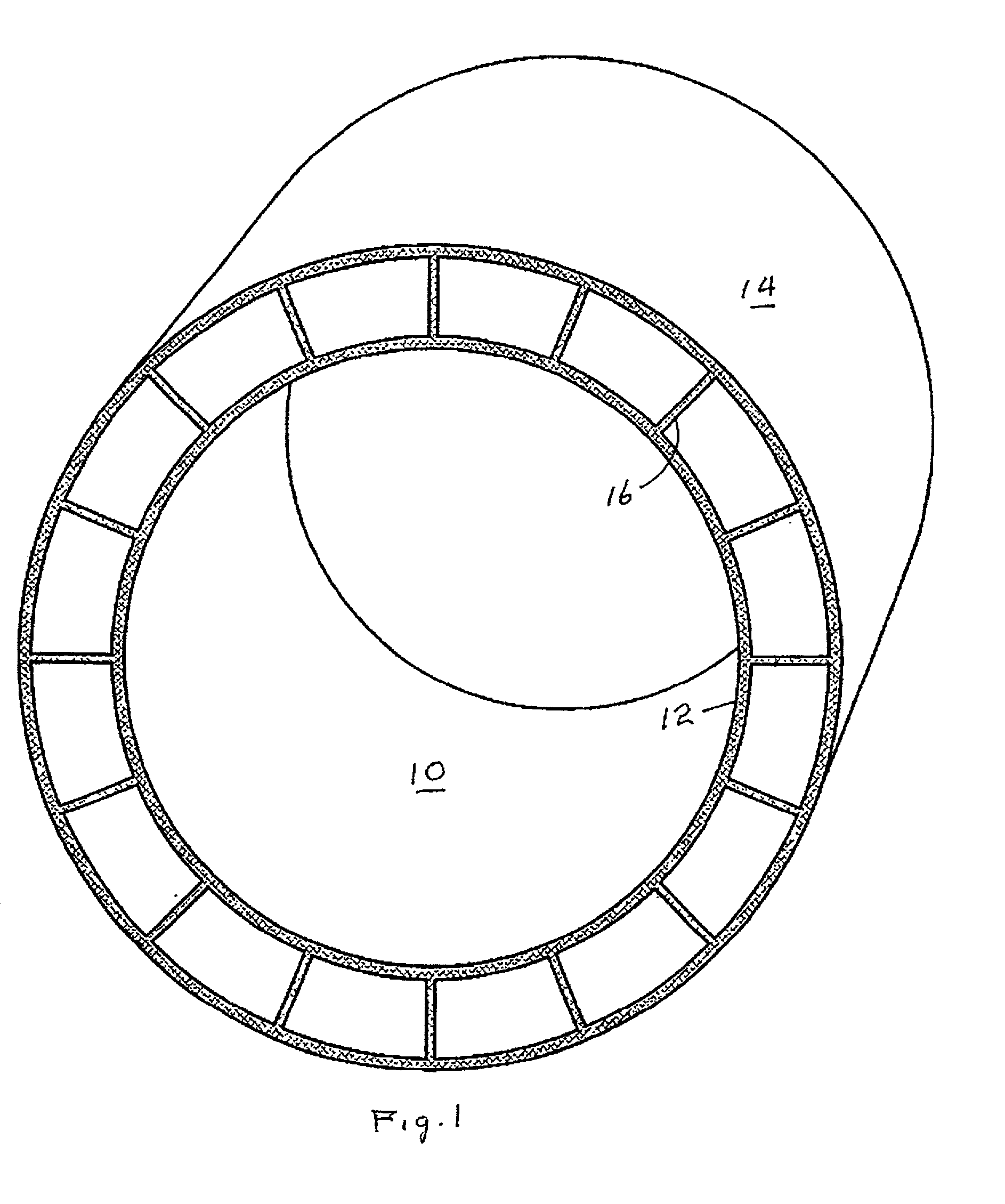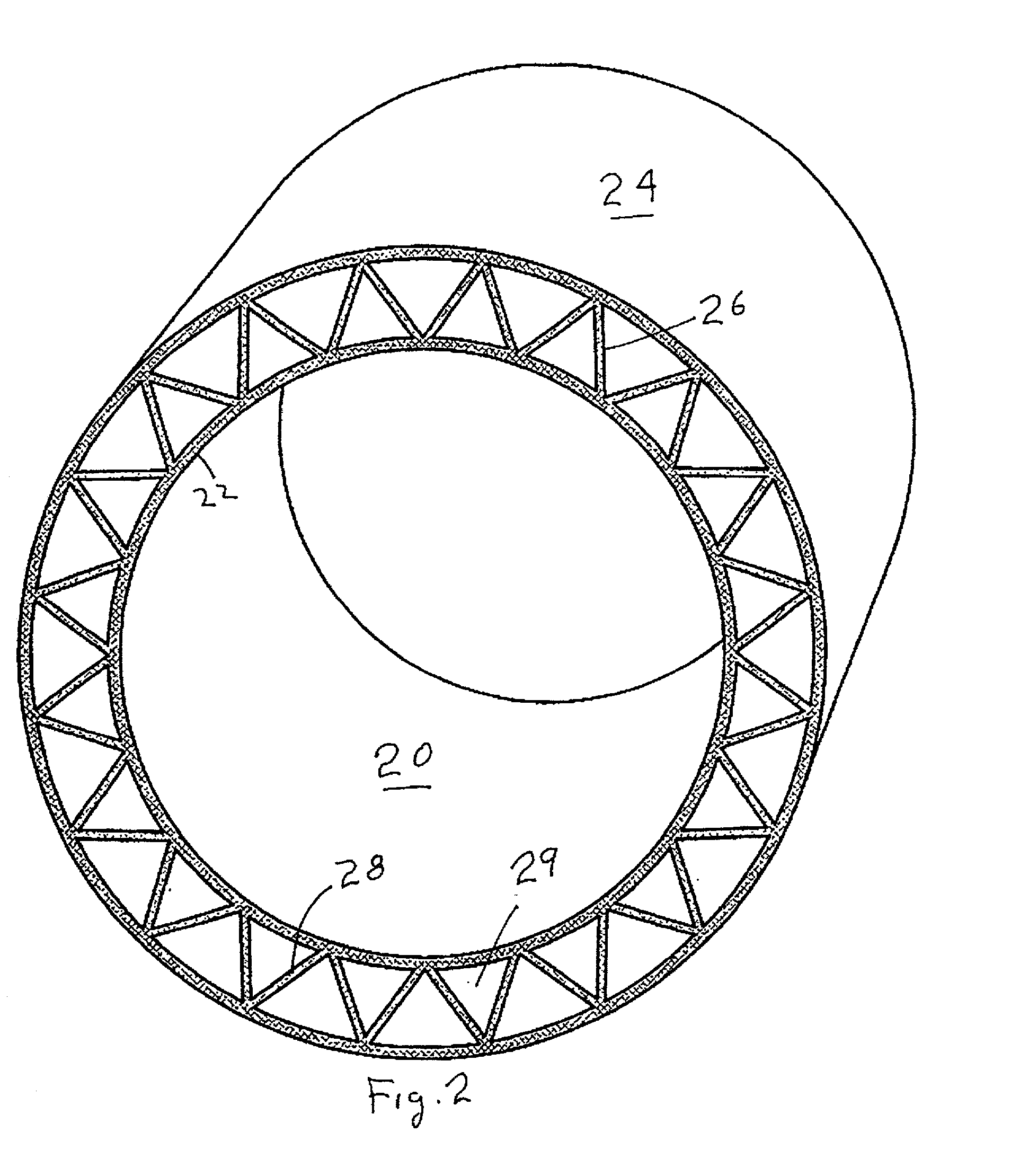Ribbed core dual wall structure
a dual-walled structure and ribbed core technology, applied in the field of tubular articles, can solve the problems of high cost of solid cores of these materials, heavy weight of solid wood plastic or steel rollers, and high shipping costs of material rolled, and achieve the effect of improving the consistency of diametral dimension
- Summary
- Abstract
- Description
- Claims
- Application Information
AI Technical Summary
Benefits of technology
Problems solved by technology
Method used
Image
Examples
Embodiment Construction
[0047] Reference will now be made to the drawing, wherein like parts have been given like reference numbers. Referring to FIG. 1, a composite tube 10 according to this invention is made up of an inner tube 12, an outer tube 14 and a plurality of ribs 16 therebetween. Referring to FIG. 2, a modified composite tube 20 of this invention is made up of an inner tube 22, and outer tube 24, a set of "left handed" "off radial" ribs 26 and an alternating set of right handed "off-radial" ribs 28. Note that the combination of the inner tube, the outer tube and the two sets of ribs forms generally triangular truss cells 29. Referring to FIG. 4, a further modified composite tube 40 of this invention is made up of an inner tube 42, an outer tube 44, and a series of left and right handed alternating off-radial ribs 46 and 48, respectively. Note that the left and right handed ribs contact and are joined to the inner and outer tubes, respectively, out of contact with each other. This is to be compar...
PUM
| Property | Measurement | Unit |
|---|---|---|
| axial length | aaaaa | aaaaa |
| angle | aaaaa | aaaaa |
| angles | aaaaa | aaaaa |
Abstract
Description
Claims
Application Information
 Login to View More
Login to View More - R&D
- Intellectual Property
- Life Sciences
- Materials
- Tech Scout
- Unparalleled Data Quality
- Higher Quality Content
- 60% Fewer Hallucinations
Browse by: Latest US Patents, China's latest patents, Technical Efficacy Thesaurus, Application Domain, Technology Topic, Popular Technical Reports.
© 2025 PatSnap. All rights reserved.Legal|Privacy policy|Modern Slavery Act Transparency Statement|Sitemap|About US| Contact US: help@patsnap.com



